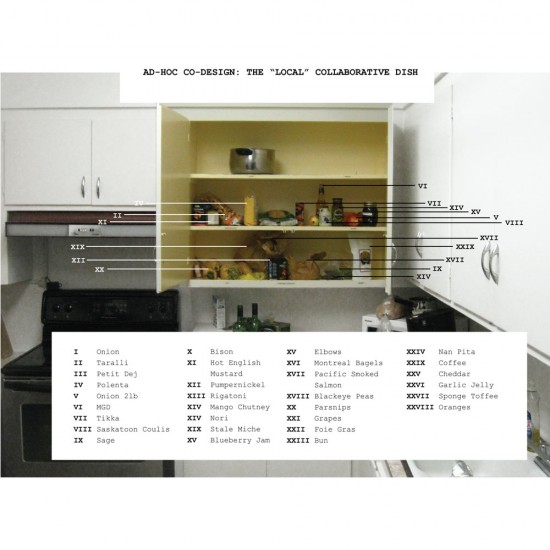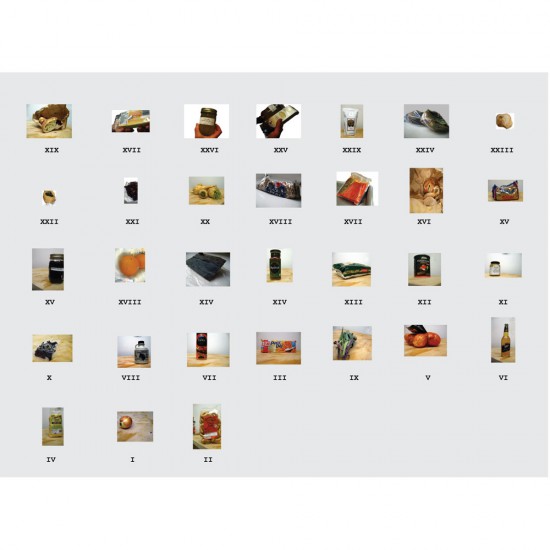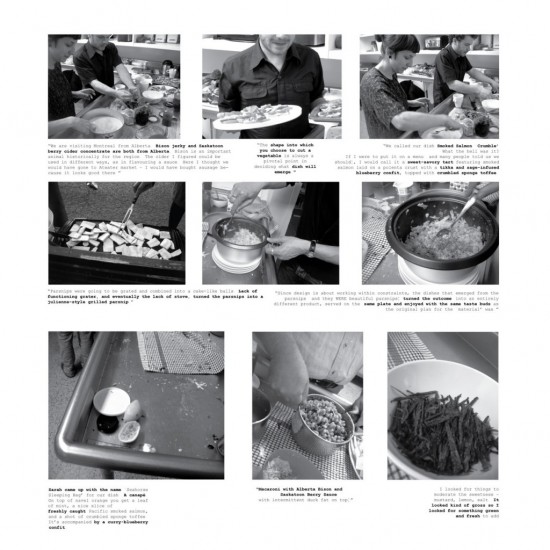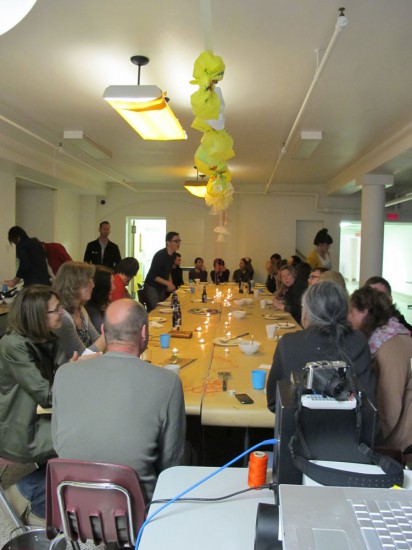During our five-day adventure, DesignCity participants investigated the meaning of food design from the point of view of provisioning, the kitchen space, and the dish itself. The following images document the result of a co-designed “micro-foodscape,” produced through a set of forces: the origins of the participants (each of whom brought an ingredient from their home city), and local products sourced in Montréal.


DesignCity participants observed that Montréal has a rich culinary tradition, influenced both by its geography and by its ever-shifting cultural makeup. We explored this confluence of factors in the micro-foodscape, through collaboration on a local meal that integrated diverse global influences and products. Some of the participants were long-time Montréalers, still others in the process of settling within the city, while the majority were simply visiting.


The collaborative micro-foodscape emerges not from the exclusive palette of an executive chef, nor is it simply an instance of the global food system at play. Instead, it reveals a spontaneous and variegated weave of “localities.” The ingredients woven together and shared in one such meal illustrates the wide connotation of the term “local”.
Some cooks and guests brought ingredients grown locally, others brought ingredients found locally, while others still chose to bring ingredients indicative of their own locality: the place of their birth, their residence, their daily walk.

Montréal micro-foodscapes of collaborative cooking are tables in which Lac Bromeau foie gras sits alongside Sharwoods mango chutney from Little India, organic parsnips from the Marché Atwater, and a packaged sponge toffee dessert from the dépanneur.
Whether identifying as settlers or visitors, what follows are some morsels of what emerged during a micro-foodscape experiment, one night in Montreal.



